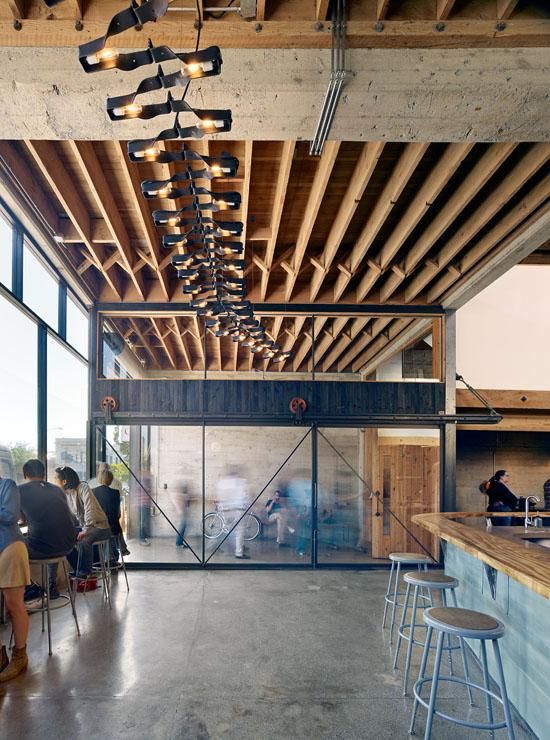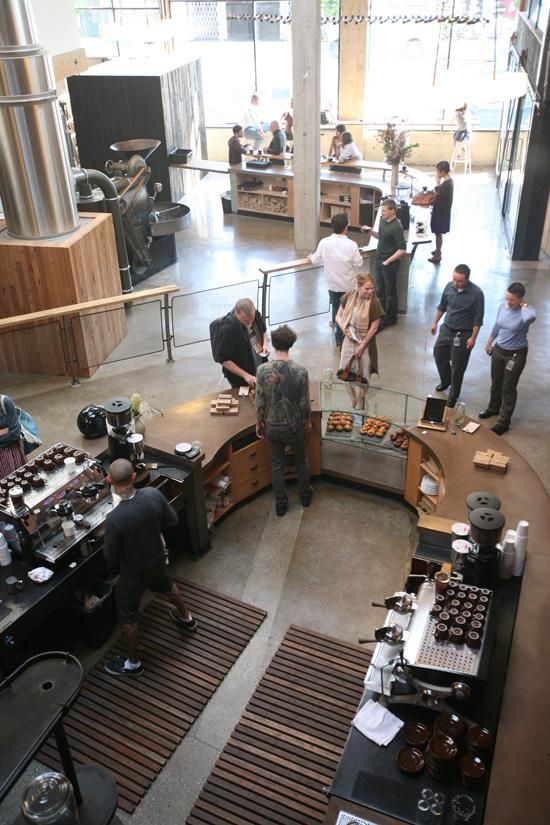How Maker Culture is Reshaping Retail Design
A San Francisco coffee shop pulls back the curtain to expose the process behind each cup served in their expansive warehouse space
/https://tf-cmsv2-smithsonianmag-media.s3.amazonaws.com/filer/20120705085011Sightglass7-BoorBridges_470.jpg)
Most beginner retailers wouldn’t dream of opening their doors without attending to every last detail of the in-store experience. They want customers to have a precisely designed journey, from the moment they walk through the door until they step back onto the street. In the last harried days before a grand opening, all the mess and materials that went into designing the retail environment get cleared away, so the consumer only sees the final outcome.
But when brothers Jerad and Justin Morrison first opened Sightglass Coffee in the SOMA district of San Francisco, they took a different tack. Not only was their space incomplete, it was almost completely raw. The 4,000-square-foot building was a cavernous shell, with 30-foot ceilings and a mezzanine ring adding even more floor area.
For almost a year, the coffee roastery and retail shop were a work in progress: Customers ordered their drinks from a kiosk that sat on one side of a plastic curtain; glimpses behind it were encouraged. “Traditionally, wholesalers in the coffee industry who also do retail environments will house their production or factory offsite, behind closed doors, not accessible to the public,” explains Jerad, “Our concept from the beginning was to have a space where the consumer is naturally subjected to our process.”

The Sightglass build-out was completed in 2011, and while it’s not as rough an environment as it was during construction, the shop retains the feeling of a place where work happens. The entrance leads customers directly across the factory line before they reach the register. With the roaster on one side and the packaging operation on the other, visitors are positioned literally in the middle of production.
“Dedication to the process of coffee was the main organizing principle,” says Seth Boor of Boor Bridges Architecture, the firm that led the design. Unlike some coffee retail environments that focus on the customer’s comfort by installing plush sofas and pendant lamps, says Boor, “the focus is on providing the customer with an experience by making amazing coffee and inviting you in to see how it’s done.”
In a way, it’s the next step beyond the open kitchen trend that disrupted restaurant design a few decades ago, turning the wall between chefs and diners into a window—or removing it altogether—to put the cooking process on display. But in that case, the bit of kitchen that was visible often felt like a stage, on which a select few cooks performed a select few culinary tricks. Much more happened back stage. In a place like Sightglass, the entire process is laid bare.

Boor Bridges has designed several of San Francisco’s cult coffee roasters’ shops, including Four Barrel and two of Ritual Coffee’s locations; and more recently, they designed a local beer brewing facility with an on-site pub. In each case, the spaces are expansive, and a relatively small percentage of the total area is dedicated to the particular logistics of retail. And, in each case, the clients are members of the rapidly growing maker movement, selling products that wear their creation process as a visible badge.
“When you give over a whole bunch of space to the craft, that elevates the craft,” Boor observes, “When you walk in, the experience isn’t about you being comfortable and serving you and retailing to you, it’s about craft and making and production.”
Of course, the other key consumer experience delivered by the craft movement is a sense of the personal. For the Morrison brothers, exposing the works behind their coffee and their store’s construction was not only about illuminating its backstory, it was also about making their customers feel a personal attachment to the place. “They felt like they were a part of this big project,” says Jerad, “People would come by on a regular basis to see how it was developing. They’d get excited about what they saw happening—they got to see the evolution of it, rather than just the end product.”
/https://tf-cmsv2-smithsonianmag-media.s3.amazonaws.com/accounts/headshot/sarah-rich-240.jpg)
/https://tf-cmsv2-smithsonianmag-media.s3.amazonaws.com/accounts/headshot/sarah-rich-240.jpg)